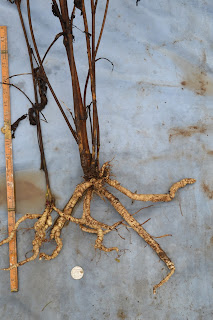
 |
| Morning Star from less sandy pot |
 |
| Morning Star from very sandy pot |
 |
| Bog garden skirret |
 |
| Vegetable bed skirret with silverweed |
 |
| Morning Star from the bog garden |
 |
| Another skirret from the bog garden |
 |
| Deaflora skirret from the vegetable bed |
 |
| Morning Star from the vegetable bed |
 |
| Largest three plants of some seed-sown skirret |
 |
 |